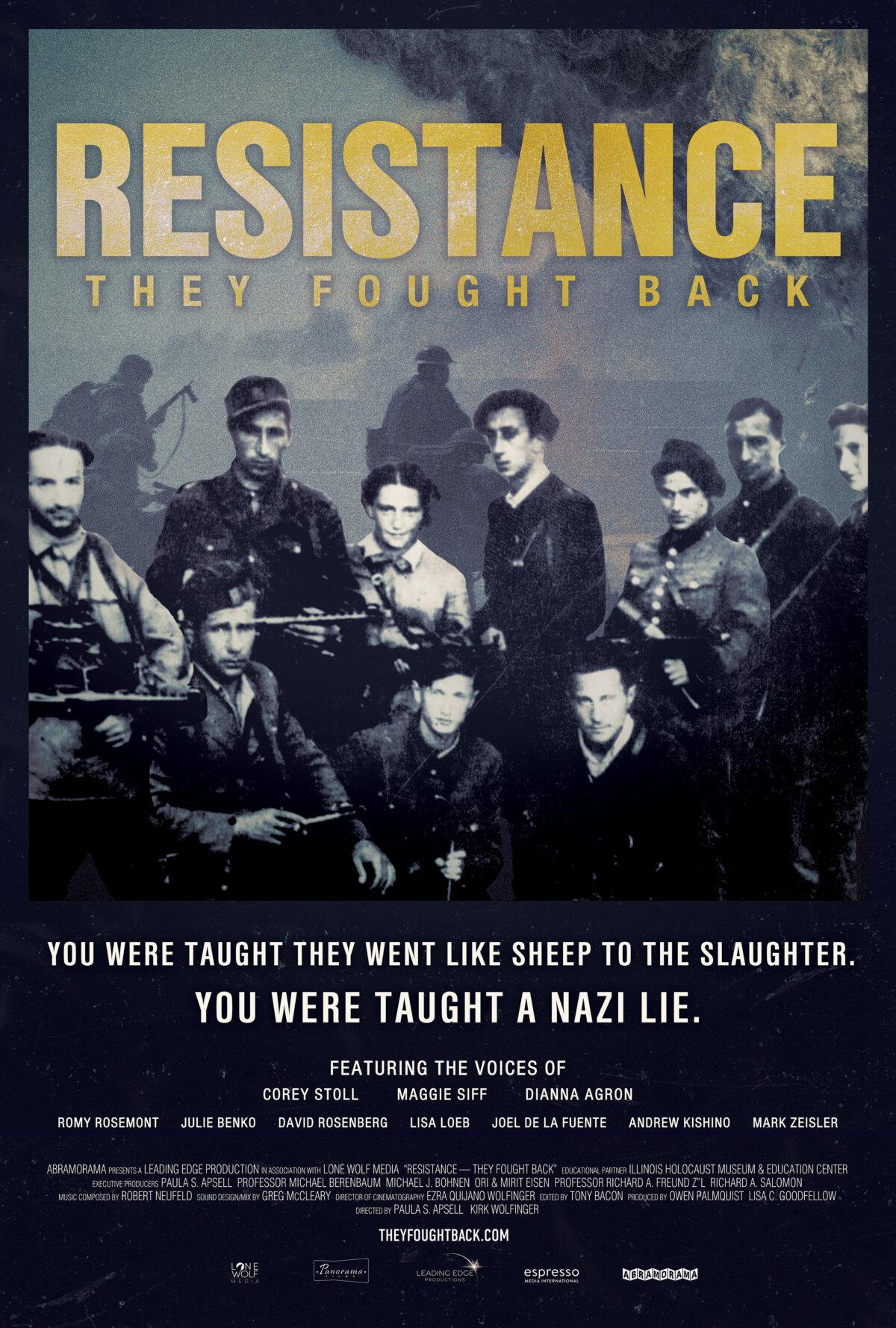Not Rated | 1hr 40min | Documentary | 2024
Six million Jews were murdered during the Holocaust, none of whom went willingly. The expression “sheep to the slaughter” is especially vexing to Jewish scholars and historians of World War II because it is so off-base. Yet despite well-documented acts of resistance, the image of passive Jewish victimhood persists. Filmmakers Paula S. Apsell and Kirk Wolfinger try to permanently dispel that misconception in the documentary “Resistance: They Fought Back.”
Anyone who knows anything about the Warsaw Ghetto will immediately accept the premise of “Resistance: They Fought Back” as an established fact. As soon as the National Socialist occupiers physically walled off a section of the city to imprison Polish Jews, an active and organized resistance sprang up. Most of their efforts focused on smuggling food and arms back into the ghetto. The former were for short-term subsistence, while the latter anticipated their eventual battle for survival when the Germans started liquidating the ghetto.

Admittedly, the Warsaw Ghetto uprising ended tragically for nearly all Jewish residents. Still, one of the film’s commentators archly observes that the uprisers held out considerably longer against Hitler’s forces than the French and Belgian militaries (combined).
While the uprising might be the best-known example of Jewish resistance during the Holocaust, Ms. Apsell and Mr. Wolfsinger repeatedly demonstrate it was far from unique. Unfortunately, Jewish resistance leaders recognized a need to judiciously pick their opportunities because of the National Socialists’ overwhelmingly disproportionate responses. Typically, the Germans would round up 1,000 innocent civilians to imprison and usually execute in retribution for each soldier killed (even though they were clearly not qualified as legitimate military targets).

As a result, many Jews channeled their energy into “Amidah,” or nonviolent resistance, focusing on efforts to preserve Jewish culture and record histories of their lives under German occupation. The so-called “Paper Brigade” in the Vilna Ghetto took a more defiant approach to Amidah-style cultural conservation in their underground campaign to save the books, manuscripts, and artwork held in the Yiddish Scientific Institute’s collection, which were scheduled for destruction.
There are some very telling numbers in “Resistance,” such as the estimated 30,000 Jewish partisans who served with various resistance units throughout occupied Europe. More than 170 of them were escapees from the Novogrudok labor camp in Belarus, who joined the partisan community led by the Jewish Bielski brothers. Yet perhaps the most famous (predominantly Jewish) mass escape was orchestrated by prisoners of the Sobibor concentration camp.
Ms. Aspell and Mr. Wolfinger marshal all these facts and historical episodes to conclusively establish the truth of an organized and proactive Jewish resistance. The drama, tragedy, and heroism they chronicle have no need for exaggeration because they are so inherently compelling.

Resistance in Movies
Frankly, it is rather perverse that these filmmakers even need to make such a case. It is not like any of this information is secret. For instance, Daniel Craig and Liev Schrieber portrayed the Bielski brothers in Edward Zwick’s film “Defiance.” The 1987 TV film “Escape from Sobibor” was nominated for five Emmy Awards, including its lead actor Alan Arkin. Similarly, Jon Voight was also Emmy nominated for “Uprising,” dramatizing the Warsaw Ghetto revolt, which was also the subject of Polish filmmaker (and Solidarity supporter) Andrzej Wajda’s 1956 classic film “Kanal.” Perhaps none of these productions was a blockbuster, but they are certainly not obscurities either.Yet the premise of “Resistance” will still strike many as quite controversial. To some extent, the on-camera experts blame the National Socialists’ own propaganda, which intentionally depicted Jews in dirty and diseased conditions, for the sake of dehumanizing them. There is also an element of prejudice to consider, which re-asserted itself in a particularly ugly manner following the 10/7 terror attacks.
A documentary such as “Resistance” should not face divisive ideological reactions, but unfortunately, it might. It should not feel so timely either, but sadly, it does. Ms. Aspell, Mr. Wolfinger, and company simply provide a deeper context for one of the greatest atrocities in history.

The film also serves as an opportune reminder of the long record of genocidal mass murder committed by professed socialist regimes, from Stalin’s Holodomor in Soviet-occupied Ukraine, through the National Socialists’ Holocaust, to Mao’s Cultural Revolution and Pol Pot’s Killing Fields. Based on the evidence collected in “Resistance,” one could argue that the European Jews had a better record fighting back than the victims of other state-sponsored genocides.
As a documentary, “Resistance” is undeniably conventional in style and form, but it provides a solid, insightful history. It also boasts a small measure of star power from some of the off-camera voices reading the letters and journals of Jewish resistance leaders, including Corey Stoll (reading the words of Abba Kovner), Dianna Agron (giving voice to Bela Hazan), and singer-songwriter Lisa Loeb (as Ruzka Korchak).
More significantly, it is a very inspiring film. Highly recommended.
“Resistance: They Fought Back” was released in New York theaters on April 12.







